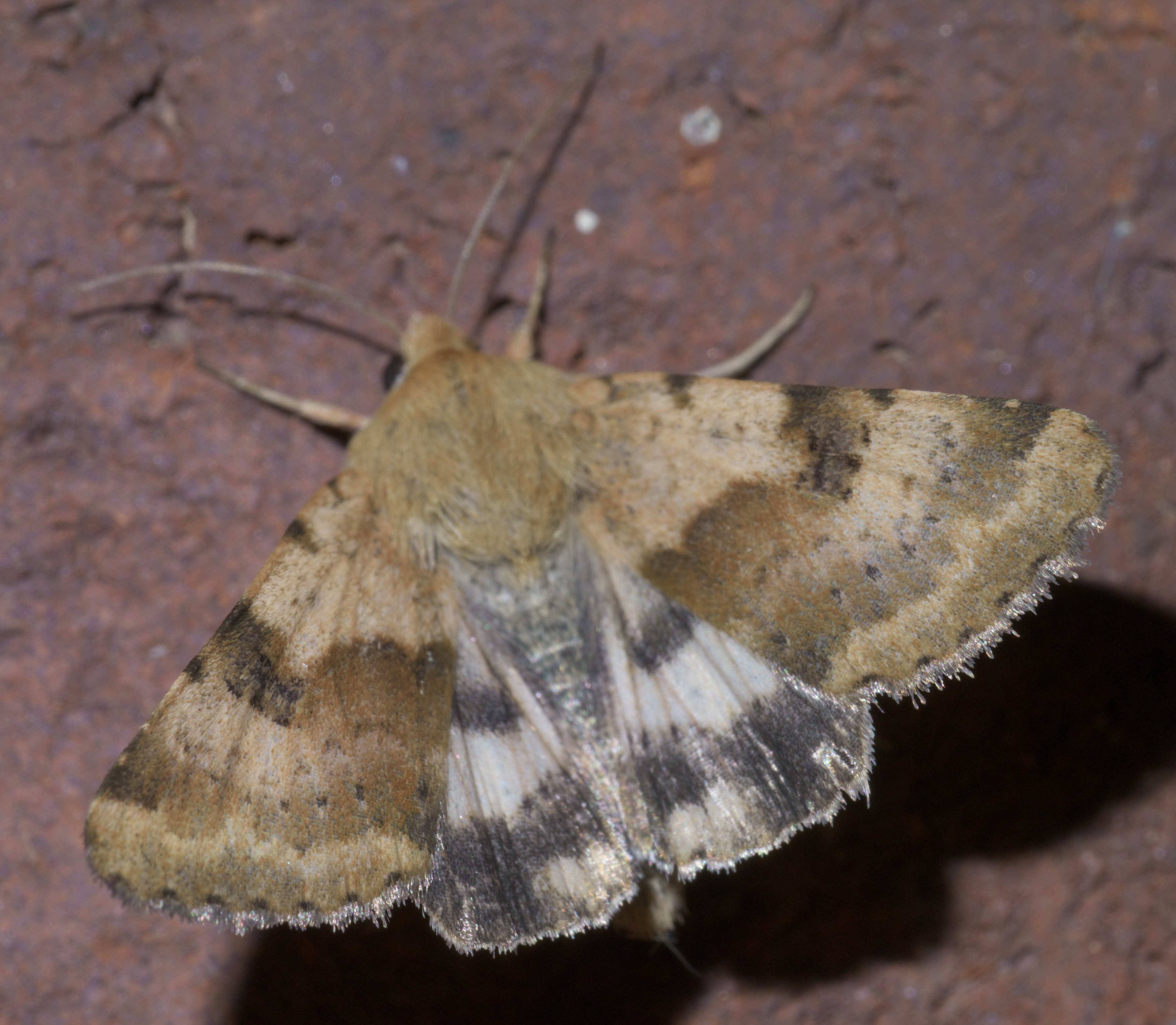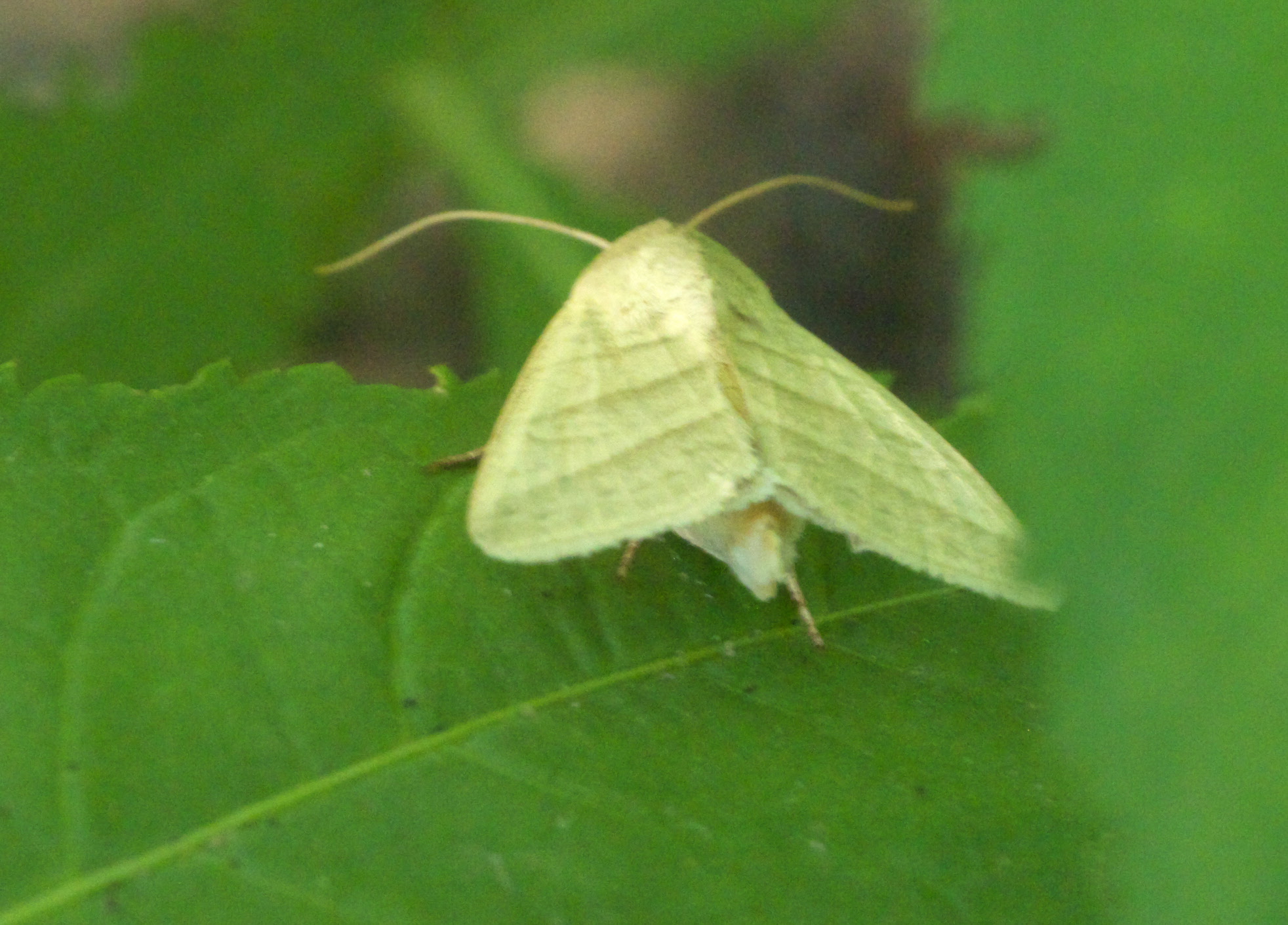|
Heliothis
''Heliothis'' is a genus of moths in the family Noctuidae. It was first described by Ferdinand Ochsenheimer in 1816. Some of the species have larvae which are agricultural pests on crop species such as tobacco, cotton, soybean and pigeon pea. Some species originally in this genus have been moved to other genera, see ''Chloridea'' and ''Helicoverpa''. Taxonomy Several species of moths of agricultural importance that used to be placed in this genus now are classified as members of the genus ''Helicoverpa'', such as the corn earworm, ''Helicoverpa zea''. The species '' subflexa'', '' tergemina'', and '' virescens'' are now members of the genus ''Chloridea''. Description The proboscis is fully developed. Palpi porrect (extending forward) and second joint evenly clothed with long hair. The third joint is short and depressed and a short frontal shift. Thorax and abdomen without tufts. Fore tibia has a pair of slender terminal spines, whereas mid and hind tibia also spined. Forewings w ... [...More Info...] [...Related Items...] OR: [Wikipedia] [Google] [Baidu] |
Chloridea Virescens
''Chloridea virescens'', commonly known as the tobacco budworm, is a moth of the family Noctuidae found throughout the eastern and southwestern United States along with parts of Central America and South America. It is a major pest of field crops including tobacco (as its common name suggests) and cotton. However, it is able to thrive on a wide variety of host plants ranging from fruits, vegetables, flowers, and weeds. Control of this pest has proven to be particularly difficult due to a variety of factors, but widespread insecticide and pesticide resistance have proven particularly concerning. ''Chloridea virescens'' was formerly a member of the genus '' Heliothis'', but was moved to the reinstated genus '' Chloridea'' as a result of genetic and morphological research published in 2013. Description Adult ''C. virescens'' are brownish in color with a light green tinge. The front wings have three dark bands, each associated with a whitish or cream border. Hindwings are whitish ... [...More Info...] [...Related Items...] OR: [Wikipedia] [Google] [Baidu] |
Helicoverpa Zea
''Helicoverpa zea, ''commonly known as the corn earworm, is a species (formerly in the genus ''Heliothis'') in the family Noctuidae. The larva of the moth ''Helicoverpa zea'' is a major agricultural pest. Since it is polyphagous (feeds on many different plants) during the larval stage, the species has been given many different common names, including the cotton bollworm and the tomato fruitworm. It also consumes a wide variety of other crops. The species is widely distributed across the Americas with the exception of northern Canada and Alaska. It has become resistant to many pesticides, but can be controlled with integrated pest management techniques including deep ploughing, trap crops, chemical control using mineral oil, and biological controls. The species migrates seasonally, at night, and can be carried downwind up to 400 km. Pupae can make use of diapause to wait out adverse environmental conditions, especially at high latitudes and in drought. Distribution ... [...More Info...] [...Related Items...] OR: [Wikipedia] [Google] [Baidu] |
Heliothis Viriplaca
''Heliothis viriplaca'', the marbled clover, is a moth of the family Noctuoidea. It is found in Europe and across the Palearctic to Central Asia then to Japan, Korea and Sakhalin. In the south, it penetrates to Kashmir and Myanmar. As a migratory moth, it also reaches areas in northern Fennoscandia in some years. North of the Alps, both indigenous and immigrant individuals occur in certain areas. The heat-loving species occurs mainly on dry grasslands, fallow land, heathlands and sunny slopes and slopes and the edges of sand and gravel pits. The wingspan is 25–30 mm. Meyrick describes it thus- Forewings greyish-ochreous, slightly greenish -tinged, paler before and beyond reniform; first and second lines indistinct; median shade rather dark fuscous, confluent with large dark fuscous reniform; subterminal line rather paler, preceded by a darker or fuscous fascia, darkest at extremities. Hindwings ochreous-whitish, towards base suffused with blackish; a large discal spot, and t ... [...More Info...] [...Related Items...] OR: [Wikipedia] [Google] [Baidu] |
Heliothis Maritima
The shoulder-striped clover (''Heliothis maritima'') is a species of moth of the family Noctuidae. It is found in most of Europe, Ukraine, southern Russia and southern Siberia, Transbaikalia, Turkey, central Asia, China, Japan, the Korean Peninsula, Mongolia, northern India, Pakistan, the Russian Far East (Primorye, southern Khabarovsk, the Amur region, southern Sakhalin and the southern Kuriles). Technical description and variation ''C. maritima'' Grasl. (= ''spergulariae'' Led.). Like '' dipsacea'' L., but the apex of forewing more produced, the median shade more oblique, and the outer fascia straighter; the terminal segment of palpi blackish, without scaling; — in the ab. ''ferruginea'' Spul. the forewing is suffused with fulvous and the hindwing with deeper yellow. — Larva either grey green with fine dark dorsal line and broad dark lateral lines above the yellowish white spiracles ; or reddish grey with two fine dark dorsal lines close together; or bluish grey green with ... [...More Info...] [...Related Items...] OR: [Wikipedia] [Google] [Baidu] |
Masalia
''Masalia'' was a genus of moths of the family Noctuidae. It is now considered to be a subgenus of ''Heliothis''. Selected species *'' Heliothis albida'' (Hampson, 1905) *'' Heliothis philbyi'' (Brandt, 1941) *'' Heliothis perstriata'' (Brandt, 1941) See: ''Heliothis ''Heliothis'' is a genus of moths in the family Noctuidae. It was first described by Ferdinand Ochsenheimer in 1816. Some of the species have larvae which are agricultural pests on crop species such as tobacco, cotton, soybean and pigeon pea. S ...'' ReferencesNatural History Museum Lepidoptera genus database Heliothis Insect subgenera {{Heliothinae-stub ... [...More Info...] [...Related Items...] OR: [Wikipedia] [Google] [Baidu] |
Heliothis Acesias
''Heliothis acesias'' is a species of moth of the family Noctuidae. It is found from north-eastern Nevada and southern Idaho, northward to southern Alberta, then eastward to southern and eastern Ontario Ontario ( ; ) is one of the thirteen provinces and territories of Canada.Ontario is located in the geographic eastern half of Canada, but it has historically and politically been considered to be part of Central Canada. Located in Central Ca .... Adults are on from June to September. External links A Review Of The Phloxiphaga Group Of Thegenus Heliothis (Noctuidae: Heliothentinae*)With Description Of A New Species Heliothis Moths of North America Moths described in 1872 {{Heliothinae-stub ... [...More Info...] [...Related Items...] OR: [Wikipedia] [Google] [Baidu] |
Heliothis Cystiphora
''Heliothis cystiphora'' is a species of moth of the family Noctuidae. It is found in Central America, South America South America is a continent entirely in the Western Hemisphere and mostly in the Southern Hemisphere, with a relatively small portion in the Northern Hemisphere at the northern tip of the continent. It can also be described as the southe ... and the Galapagos. Heliothis Moths described in 1860 {{Heliothinae-stub ... [...More Info...] [...Related Items...] OR: [Wikipedia] [Google] [Baidu] |
Heliothis Belladonna
''Heliothis belladonna'' is a moth of the family Noctuidae. It is found in North America, including Washington Washington commonly refers to: * Washington (state), United States * Washington, D.C., the capital of the United States ** A metonym for the federal government of the United States ** Washington metropolitan area, the metropolitan area centered o .... External linksImages Heliothis Moths described in 1881 {{Heliothinae-stub ... [...More Info...] [...Related Items...] OR: [Wikipedia] [Google] [Baidu] |
Chloridea Subflexa
''Chloridea subflexa'' is a moth of the family Noctuidae first described by Achille Guenée in 1852. It is found from most of the United States, throughout the Antilles, and south to Argentina. The larvae feed exclusively on fruits of ''Physalis'' species, which are enclosed in an inflated, lantern-shaped calyx. To feed, each newly emerged caterpillar cuts a small hole in the calyx and then bores into the fruit. Once inside, the caterpillar spends the majority of its time sheltered inside of the fruit's husk. ''Chloridea subflexa'' was formerly a member of the genus ''Heliothis ''Heliothis'' is a genus of moths in the family Noctuidae. It was first described by Ferdinand Ochsenheimer in 1816. Some of the species have larvae which are agricultural pests on crop species such as tobacco, cotton, soybean and pigeon pea. So ...'', but was moved to the reinstated genus ''Chloridea'' as a result of genetic and morphological research published in 2013. The MONA or Hodges number fo ... [...More Info...] [...Related Items...] OR: [Wikipedia] [Google] [Baidu] |
Heliothis Australis
''Heliothis australis'' is a species of moth of the family Noctuidae. It is found from Chiapas in southern Mexico northward to New Mexico and Arizona Arizona ( ; nv, Hoozdo Hahoodzo ; ood, Alĭ ṣonak ) is a state in the Southwestern United States. It is the 6th largest and the 14th most populous of the 50 states. Its capital and largest city is Phoenix. Arizona is part of the Fou .... Adults are on from May to October. External linksA Review Of The Phloxiphaga Group Of Thegenus Heliothis (Noctuidae: Heliothentinae*)With Description Of A New Species Heliothis Moths described in 1994 {{Heliothinae-stub ... [...More Info...] [...Related Items...] OR: [Wikipedia] [Google] [Baidu] |
Chloridea Tergemina
''Chloridea tergemina'' is a species of moth of the family Noctuidae. It is found in South America, including Brazil. The larvae feed on various solanaceaeous plants. The species was formerly a member of the genus ''Heliothis ''Heliothis'' is a genus of moths in the family Noctuidae. It was first described by Ferdinand Ochsenheimer in 1816. Some of the species have larvae which are agricultural pests on crop species such as tobacco, cotton, soybean and pigeon pea. So ...'', but was moved to the reinstated genus ''Chloridea'' as a result of genetic and morphological research published in 2013. References External links Noctuídeos (Lepidoptera, Noctuidae) Do Museu Entomológico Ceslau Biezanko, Departamento De Fitossanidade, Faculdade De Agronomia “Eliseu Maciel”, Universidade Federal De Pelotas, RS Heliothis {{Heliothinae-stub ... [...More Info...] [...Related Items...] OR: [Wikipedia] [Google] [Baidu] |
Heliothis Lucilinea
''Heliothis lucilinea'' is a species of moth of the family Noctuidae. It is found on Hispaniola and Jamaica Jamaica (; ) is an island country situated in the Caribbean Sea. Spanning in area, it is the third-largest island of the Greater Antilles and the Caribbean (after Cuba and Hispaniola). Jamaica lies about south of Cuba, and west of His .... External linksMoths of Jamaica Heliothis Moths described in 1858 {{Heliothinae-stub ... [...More Info...] [...Related Items...] OR: [Wikipedia] [Google] [Baidu] |


.jpg)
